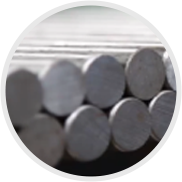 Afrikaans
Afrikaans  Albanian
Albanian  Amharic
Amharic  Arabic
Arabic  Armenian
Armenian  Azerbaijani
Azerbaijani  Basque
Basque  Belarusian
Belarusian  Bengali
Bengali  Bosnian
Bosnian  Bulgarian
Bulgarian  Catalan
Catalan  Cebuano
Cebuano  Corsican
Corsican  Croatian
Croatian  Czech
Czech  Danish
Danish  Dutch
Dutch  English
English  Esperanto
Esperanto  Estonian
Estonian  Finnish
Finnish  French
French  Frisian
Frisian  Galician
Galician  Georgian
Georgian  German
German  Greek
Greek  Gujarati
Gujarati  Haitian Creole
Haitian Creole  hausa
hausa  hawaiian
hawaiian  Hebrew
Hebrew  Hindi
Hindi  Miao
Miao  Hungarian
Hungarian  Icelandic
Icelandic  igbo
igbo  Indonesian
Indonesian  irish
irish  Italian
Italian  Japanese
Japanese  Javanese
Javanese  Kannada
Kannada  kazakh
kazakh  Khmer
Khmer  Rwandese
Rwandese  Korean
Korean  Kurdish
Kurdish  Kyrgyz
Kyrgyz  Lao
Lao  Latin
Latin  Latvian
Latvian  Lithuanian
Lithuanian  Luxembourgish
Luxembourgish  Macedonian
Macedonian  Malgashi
Malgashi  Malay
Malay  Malayalam
Malayalam  Maltese
Maltese  Maori
Maori  Marathi
Marathi  Mongolian
Mongolian  Myanmar
Myanmar  Nepali
Nepali  Norwegian
Norwegian  Norwegian
Norwegian  Occitan
Occitan  Pashto
Pashto  Persian
Persian  Polish
Polish  Portuguese
Portuguese  Punjabi
Punjabi  Romanian
Romanian  Russian
Russian  Samoan
Samoan  Scottish Gaelic
Scottish Gaelic  Serbian
Serbian  Sesotho
Sesotho  Shona
Shona  Sindhi
Sindhi  Sinhala
Sinhala  Slovak
Slovak  Slovenian
Slovenian  Somali
Somali  Spanish
Spanish  Sundanese
Sundanese  Swahili
Swahili  Swedish
Swedish  Tagalog
Tagalog  Tajik
Tajik  Tamil
Tamil  Tatar
Tatar  Telugu
Telugu  Thai
Thai  Turkish
Turkish  Turkmen
Turkmen  Ukrainian
Ukrainian  Urdu
Urdu  Uighur
Uighur  Uzbek
Uzbek  Vietnamese
Vietnamese  Welsh
Welsh  Bantu
Bantu  Yiddish
Yiddish  Yoruba
Yoruba  Zulu
Zulu v belt idler pulleys by size
Understanding V-Belt Idler Pulleys by Size
V-belt idler pulleys play a crucial role in the functionality and efficiency of belt-driven systems. In various industrial applications, these pulleys help in maintaining tension, guiding the belt, and reducing wear on components. Understanding the sizing options available for V-belt idler pulleys can help engineers and maintenance personnel make informed decisions that enhance reliability and performance. This article will explore the importance of V-belt idler pulleys, how their sizes are categorized, and the key factors to consider when selecting the right size for your application.
The Role of V-Belt Idler Pulleys
Before delving into size specifications, it's essential to recognize what V-belt idler pulleys do. These pulleys are used in various machines, including motors, conveyors, and HVAC systems. Their primary functions include
1. Tension Maintenance Idler pulleys apply tension to the belt, which is crucial for effective power transmission. If the belt is too loose, it can slip on the pulleys, leading to inefficient energy use and potential damage to the belt and components.
2. Belt Guidance Proper alignment of the belt is vital for preventing premature wear. Idler pulleys help guide the belt along its intended path, ensuring that it remains in contact with other pulleys as designed.
3. Noise Reduction By providing a stable point of contact, idler pulleys can minimize noise generated by the belt's operation, contributing to a quieter working environment.
4. Wear Leveling By distributing the load across various pulleys, idler pulleys help reduce wear on specific components, extending the overall life of the drive system.
Idler Pulley Sizes
When it comes to V-belt idler pulleys, size matters significantly. They are available in various diameters, widths, and configurations, which influence their performance in specific applications. The sizing can often be categorized based on
1. Diameter The diameter of an idler pulley is crucial for maintaining the correct belt tension. Larger pulleys generally offer better grip and reduce the risk of belt slippage, while smaller pulleys take less space but may not provide as much tension.
2. Belt Width The width of the pulley must match the width of the belt being used. Using an incompatible width can lead to excessive wear or reduced efficiency in power transmission.
v belt idler pulleys by size

3. Bore Size The bore, or inner diameter of the pulley, should be compatible with the shaft size it is mounted on. Ensuring a good fit is essential to prevent vibrations and assured operation.
4. Material and Design The choice of material will also influence the size selection. For example, a lighter-weight plastic or aluminum pulley might be better suited for applications requiring less load, whereas steel idler pulleys may be necessary for heavy-duty applications.
Key Factors for Selecting the Right Size
Choosing the correct size for V-belt idler pulleys involves considering several factors
1. Application Requirements Understand the specific requirements of the machine. High-tension applications may need larger pulleys, while lighter tasks may benefit from smaller sizes.
2. Environmental Conditions The operating conditions (temperature, exposure to chemicals, etc.) can influence material selection and, consequently, size.
3. Belt Type and Size With various types of belts available (such as classical, narrow, or high-power belts), ensure the idler pulley meets the specifications of the belt in use.
4. Future Maintenance Consider how the size may impact future maintenance or replacement. A pulley that is too large could complicate installation or access for repairs, whereas a smaller pulley may be easier to handle.
5. Cost and Availability Sometimes, the most suitable size might not be the most readily available one. Balancing performance with budget considerations is essential.
Conclusion
In conclusion, V-belt idler pulleys are fundamental components that significantly enhance the performance and longevity of belt-driven systems. Understanding the sizing options available — including diameter, width, and material — is critical to selecting the right pulley for your specific application. By carefully considering the operational requirements and environmental conditions, you can ensure optimal performance, reduced wear, and improved efficiency in your machinery. Whether you are an engineer, technician, or maintenance professional, making informed choices about V-belt idler pulleys will undoubtedly contribute to the success of your operations.
-
Revolutionizing Conveyor Reliability with Advanced Rubber Lagging PulleysNewsJul.22,2025
-
Powering Precision and Durability with Expert Manufacturers of Conveyor ComponentsNewsJul.22,2025
-
Optimizing Conveyor Systems with Advanced Conveyor AccessoriesNewsJul.22,2025
-
Maximize Conveyor Efficiency with Quality Conveyor Idler PulleysNewsJul.22,2025
-
Future-Proof Your Conveyor System with High-Performance Polyurethane RollerNewsJul.22,2025
-
Driving Efficiency Forward with Quality Idlers and RollersNewsJul.22,2025





























